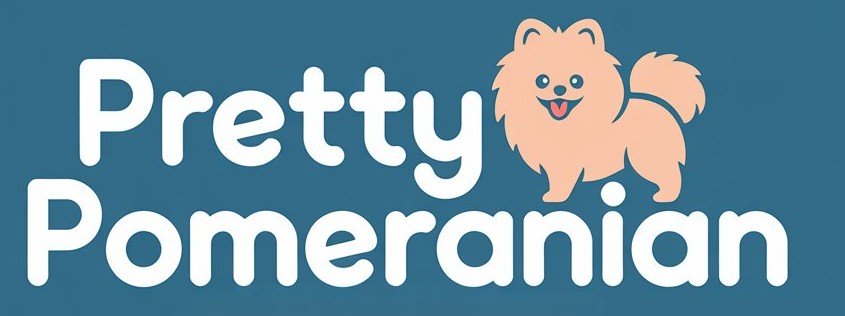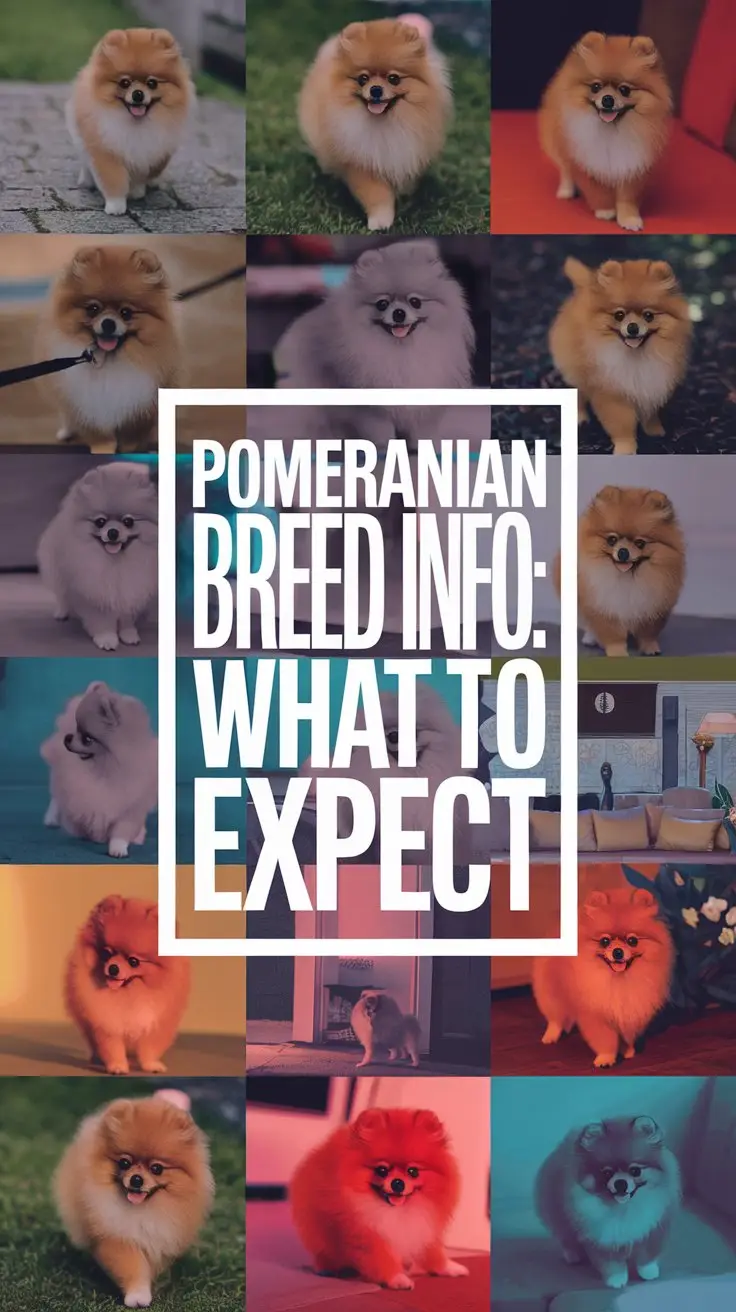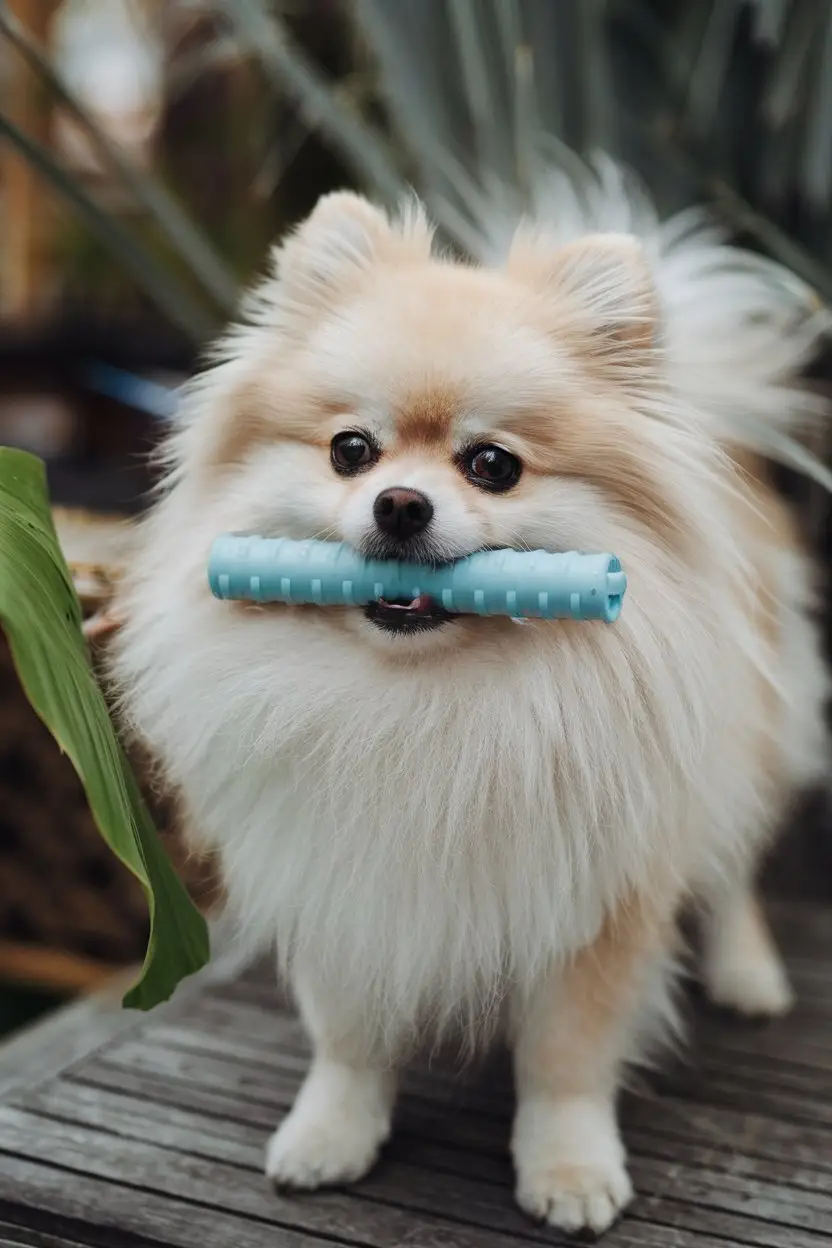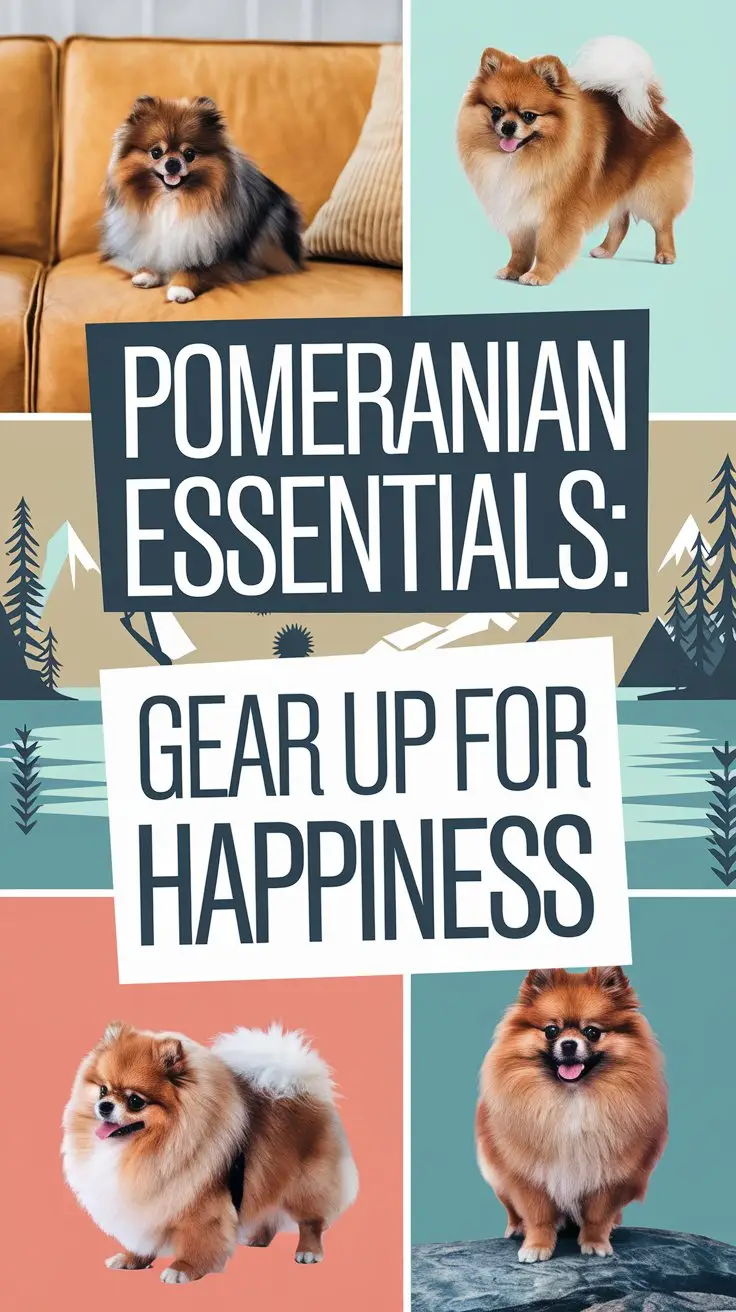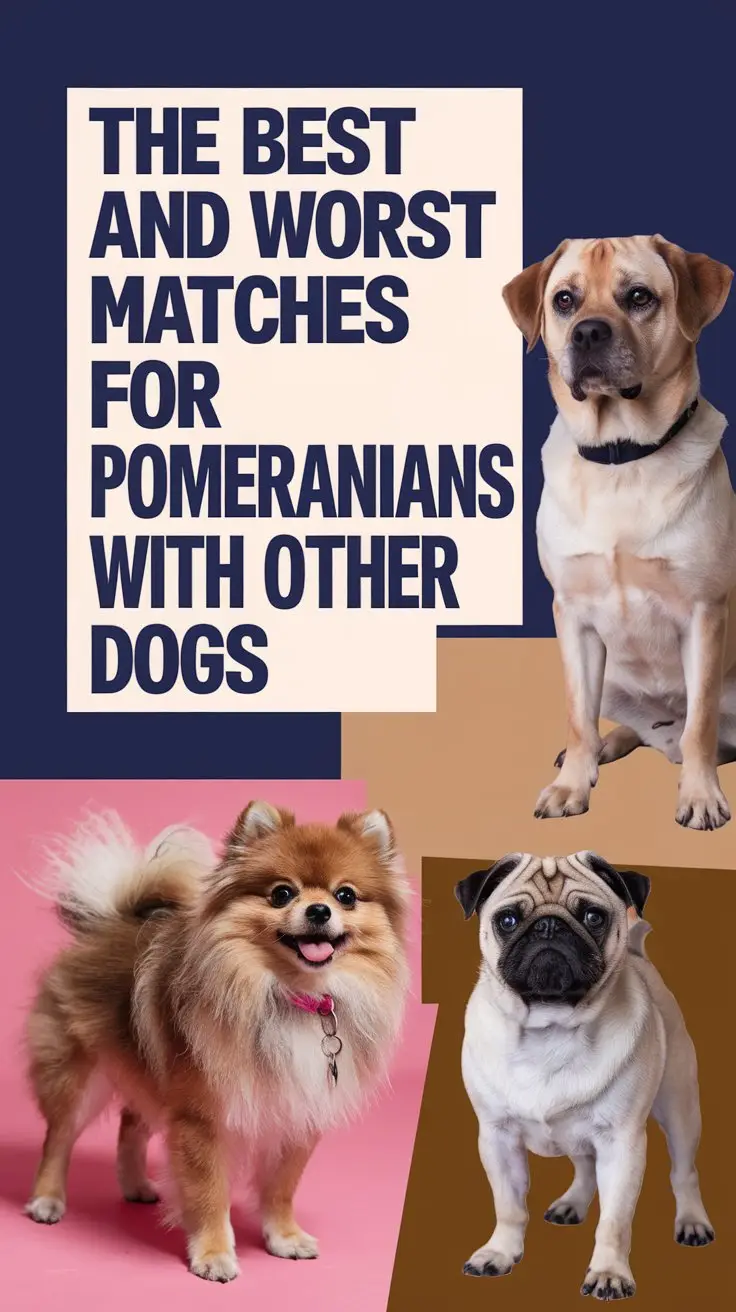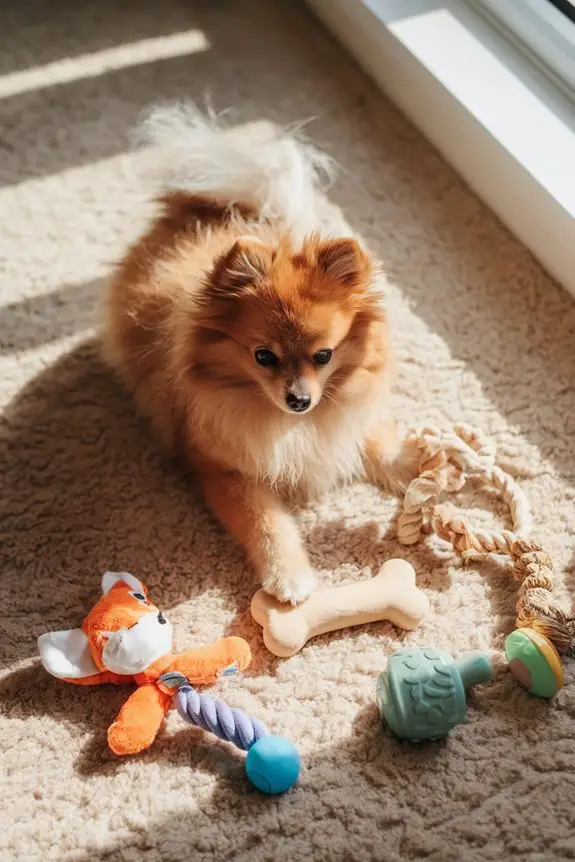These little fluff-balls may be tiny at 3-7 pounds, but they’ve got huge personalities! Originally bred from big sled dogs, Poms now rock a super-fluffy double coat that comes in all sorts of colors – orange, black, cream, you name it!
Back in the day, Queen Victoria was totally obsessed with them, and it’s easy to see why. Just know that these cuties need plenty of brushing and grooming throughout the week, plus about an hour of playtime each day to stay in tip-top shape.
They’re pretty bright and easy to train, usually sticking around for 12-16 years when well cared for. With their pointed ears and adorable fox faces matching their zippy, energetic nature, Poms make awesome pets – just make sure you’re ready for their special needs before you bring one of these little puffballs home!
The Pomeranian’s Royal Heritage
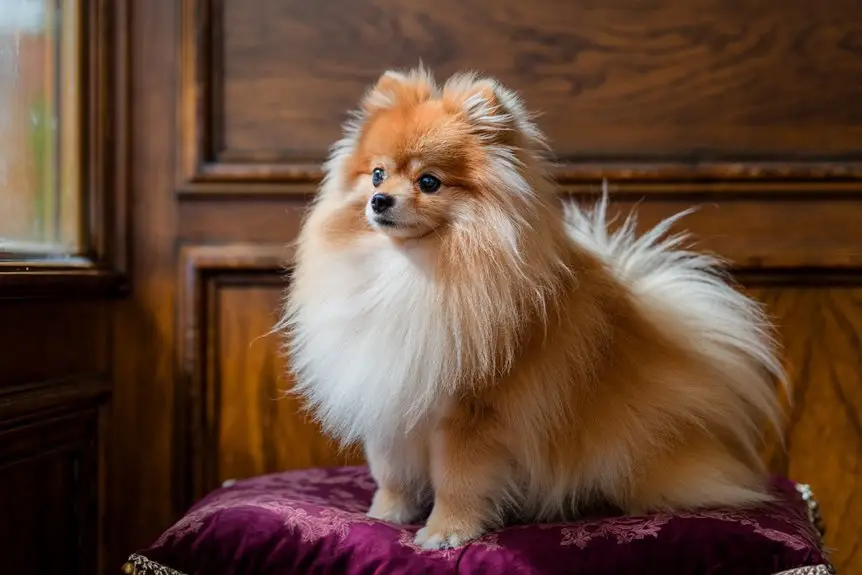
Hey, ever wondered about your little Pom’s fancy background? These adorable fluffballs have quite the royal story! It’s pretty wild to think that these tiny pups used to be way bigger – we’re talking 30 pounds! That’s a far cry from the pocket-sized cuties we see today, right? They first came from a place called Pomerania, smack between Poland and Germany.
You can thank Queen Victoria for your pint-sized pooch. She totally fell head over heels for these peppy dogs while she was hanging out in Italy. She’s the one who started breeding them smaller and smaller until they became the perfect lap-sized companions we know today. Thanks to her, these little dogs became super trendy with all the rich and fancy people across Europe. I mean, who could resist those fluffy faces? Even now, people can’t help but fall in love with their sassy personalities and that adorable fox-like look! Modern Pomeranians showcase their noble heritage with their dense double coat that originally helped their larger ancestors brave harsh weather conditions.
Physical Features and Size
Those cute Poms are super small but totally packed with personality! They’re just tiny little things, standing 7 to 12 inches tall and weighing a mere 3 to 7 pounds – perfect if you live in an apartment.
Their show-stopping feature has got to be that amazing fluffy double coat, which comes in so many fun colors like orange, red, black, blue, chocolate, cream, and sable. You can spot them with different patterns too, like parti-color and brindle. The outer fur sticks straight out giving them that puffy teddy bear look, while the undercoat keeps them nice and warm. Add in those perky little ears, sweet almond eyes, and that fabulous tail that curls over their back, and you’ve got one adorable package!
Regular grooming maintenance routines are essential to keep their luxurious double coat looking its best and prevent matting.
Grooming Your Furry Friend
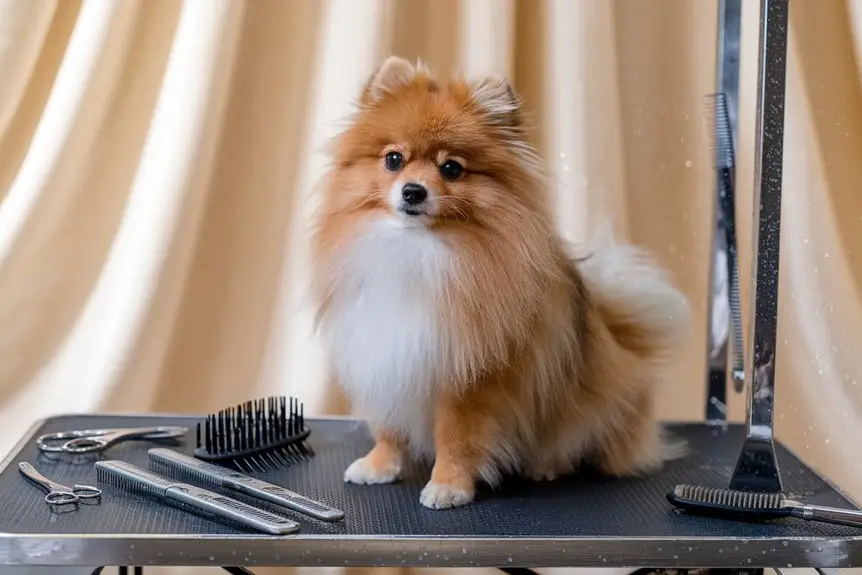
Hey, taking care of a Pom’s amazing double coat isn’t a walk in the park – but it’s totally worth it to keep that fluffy look! You’ll want to grab your brush and give your little buddy a good brushing several times each week. Trust me, this helps stop those pesky mats from forming and cuts down on fur ending up all over your stuff.
Bath time? Don’t go overboard! Every couple of months should do the trick, unless your pup’s been rolling in something funky. Just make sure to grab a mild shampoo that won’t bug their skin. Oh, and don’t forget about the other stuff – keeping those nails short, peeking in their ears for any icky stuff, and brushing those tiny teeth regularly.
Pro tip: Stock up on lint rollers! These little furballs might be small, but wow, can they shed! You’ll find yourself reaching for those rollers pretty often to clean up all that fluff from your clothes and furniture. Expect even more shedding during seasonal coat changes in spring and fall when your Pom transitions between their summer and winter coats.
Health Considerations and Care
Taking care of your Pom’s health isn’t too complicated, but you’ll want to stay on top of a few things. Make sure to get them to the vet regularly and keep an eye out for some health issues they often face – like teeth problems, heart troubles, wonky kneecaps, and breathing issues.
With the right care, these little fluffballs can stick around for 12 to 16 years! To help them live their best life, use a harness when walking them (skip the collar), and don’t let them get chubby – it’s rough on their knees. Also, get serious about brushing their teeth since Poms tend to have dental issues.
Don’t slack on their shots and health checks! You might want to look into pet insurance too – vet bills for Poms can get pretty pricey.
Watch out for signs of low blood sugar, like weakness or shivering, which is common in small breeds like Pomeranians.
Training and Social Skills
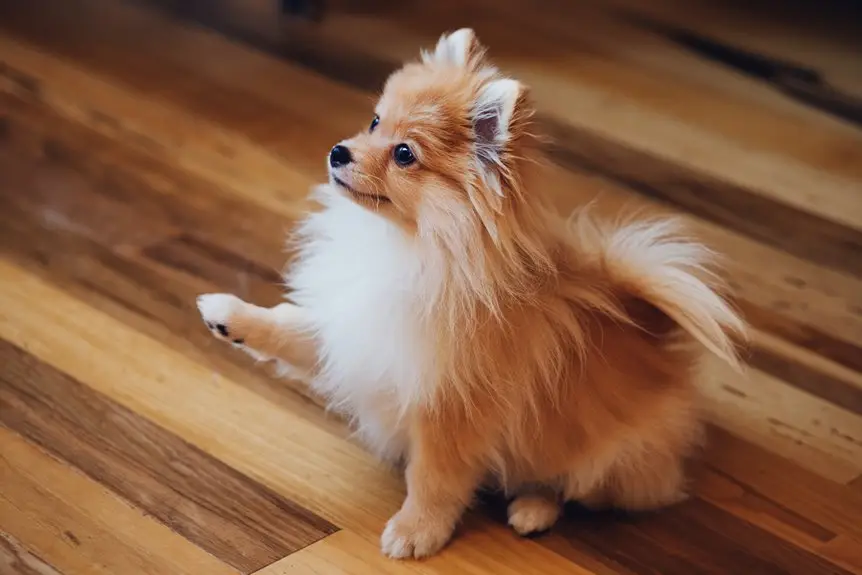
Training these little Poms might seem like a big job, but they’re super smart and love learning new stuff! They do really well with treats and lots of “good boy/girl” praise when you’re teaching them – it’s the way to go. Get them used to meeting new friends (both furry and human) when they’re young so they don’t turn into tiny barking machines later on.
Teaching your Pom the basics is pretty straightforward – just keep training sessions short and sweet. Don’t fall for those adorable puppy eyes and let them get away with everything – they actually need you to set some ground rules. While they’re usually total sweethearts, keep an eye on them around kids since they’re so small and could get hurt from rough play. Make sure to start leash training early, and stick with a harness instead of a collar to keep their tiny throat safe. Positive reinforcement techniques work best for effective learning and building trust with your Pomeranian.
Exercise and Enrichment
Physical exercise and mental training work together to keep your Pom happy and healthy. Your little fluffball needs about an hour of moving around each day – whether it’s walks around the block, playing fetch, or just goofing around indoors.
These tiny pups have tons of energy, so you’ll want to keep them busy! Mix things up with fun stuff like puzzle toys, games of fetch, and quick training sessions. You can even make a mini obstacle course at home or get some toys that hide treats inside. Just remember to use a harness when you’re out walking – it’s way better for their throat than a collar.
Keep an eye on your Pom when you’re exercising, especially when it’s warm outside. Their thick, fluffy coat means they can get too warm pretty fast, so watch out for any signs they’re getting tired. They might be small, but they sure need plenty of playtime to stay out of trouble! Window watching activities can provide excellent mental stimulation when outdoor exercise isn’t possible.
Living With Your Pom
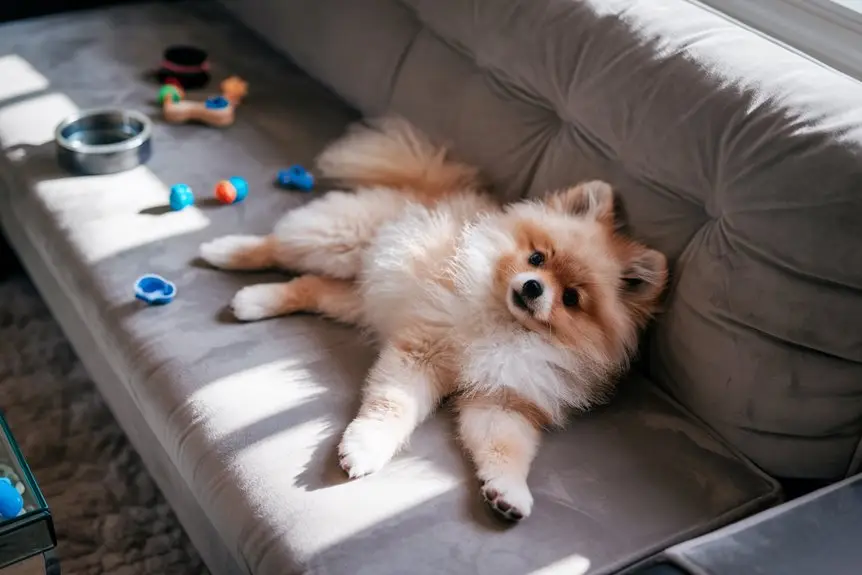
Having a Pomeranian at home is like having a tiny, fluffy sidekick with attitude! These little furballs love to bark at pretty much everything – from passing cars to falling leaves. You’ll want to start training them early to keep the barking in check.
These pups are total velcro dogs – they’ll stick to you like glue because they’re super nosy and don’t want to miss out on anything. While they’re great with families, you’ll need to keep an eye on them around kids since they’re so small. Be ready to spend around $150 each month on food, supplies, and basic care, plus extra cash for those surprise vet trips.
Don’t let their small size fool you – these little guys need their daily walks and playtime to stay happy and avoid getting bored and chewing up your stuff. Make sure to use a harness when walking them (their throats are pretty sensitive), and keep up with their grooming to maintain that adorable fluff-ball look they’re famous for. Their food-driven nature makes them highly responsive to training with treats as rewards.
Frequently Asked Questions
Do Pomeranians Get Along Well With Cats?
Your Pom and kitty can totally be BFFs! These tiny fluffballs are super friendly and pretty good at picking up on other pets’ vibes. Just keep an eye on them when they first meet, and they’ll likely end up being awesome buddies!
Can Pomeranians Be Left Alone During Work Hours?
Hey, these little Poms can handle being by themselves for about 6-8 hours, but you’ll want to make sure they’ve got plenty of fun stuff to keep them busy – toys scattered around, fresh food and water, and a spot to do their business. Since they’re total social butterflies, you might want to get someone to check on them if you’re gone longer than that.
Are Pomeranians Good Apartment Dogs Despite Their Barking Tendencies?
Poms are great for apartment life since they’re tiny and don’t need tons of exercise. Just make sure you work on training them to bark less – that way, you and your neighbors can all live happily together! These little fluff balls can be pretty vocal, but with some patience and consistent training, they can learn when it’s okay to speak up and when to keep quiet.
What Age Do Pomeranians Stop Growing?
Your Pom pup takes a while to grow up – they’re not like some tiny dogs that shoot up super fast! You’ll see them hit their max height when they’re about 6-7 months old, but they’ll keep getting fluffier and filling out until they reach somewhere between 12-15 months. So don’t worry if your little furball isn’t growing as quickly as you expected!
Do Pomeranians Recognize Their Names When Called?
Guess what? Your Pom will totally know their name! These smart little fluffballs pick up on things super fast, and since they love making their humans happy, they’ll catch on to their name pretty quickly. Just keep using it when you talk to them and reward them with treats and love – they’ll get the hang of it in no time!
